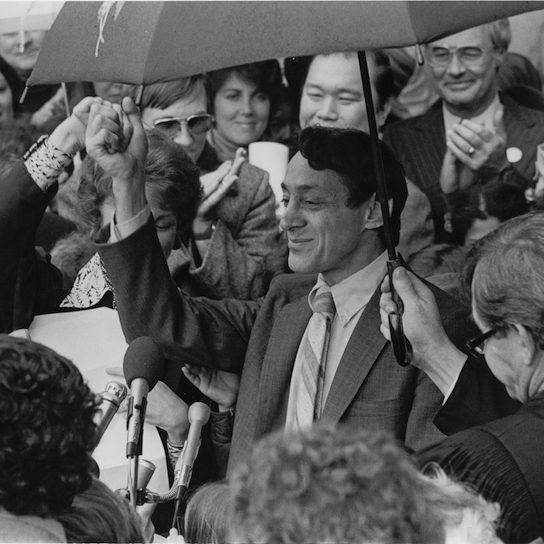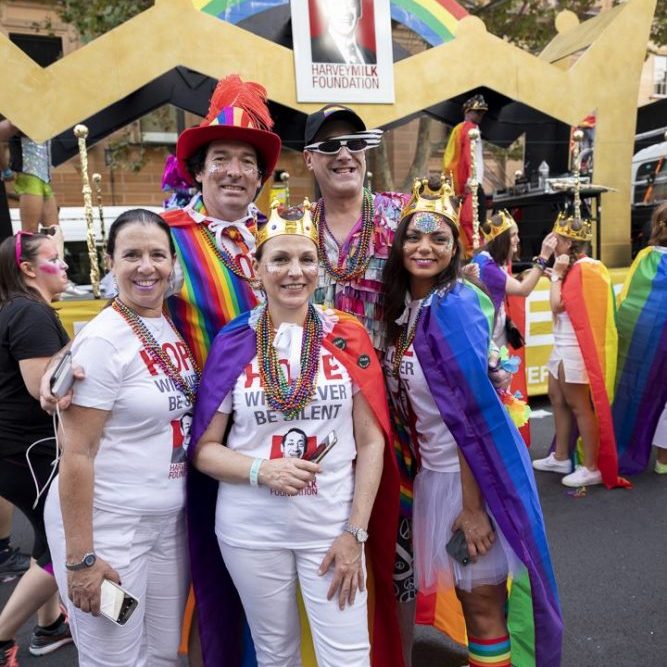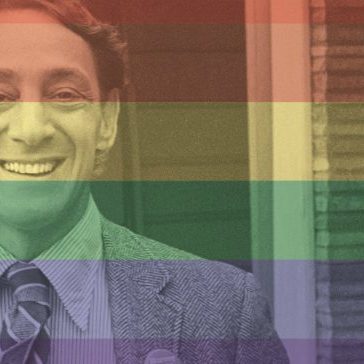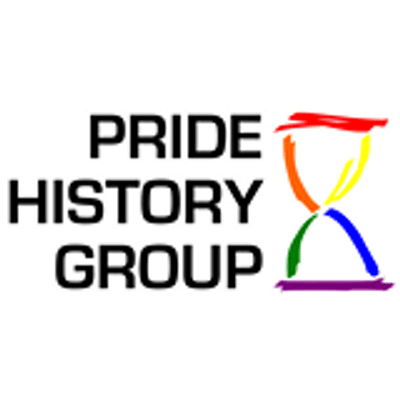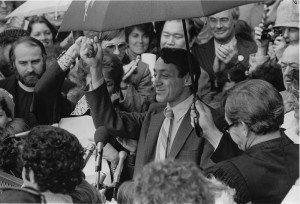
For an older lesbian, one historic Gay Pride parade—and Harvey Milk—was enough to set her on her course.
I went to my first Gay Pride Parade in 1978. I was 26, and I’d only been out about five years. A friend and I drove from the heat of our much-smaller Central Valley town across the Bay Bridge and into the city, fog still holding iconic landmarks in cool shadows. We found a place to stand along Market Street near Union Square, where the parade route turned, and the crowds grew. There was so much to look at, so much to feel, so much to think about—and so many people.
Harvey Milk rode down Market in the back of a convertible
Those who know about these things estimated there were 240,000 at the event; for me, it was a little overwhelming. Partly it was such a large crowd (nearly 2 million are expected to attend this year, by the way), but more than that, it was the first time I’d been around that many gay people. Harvey Milk rode down Market in the back of a convertible, drag queens were everywhere, and Dykes on Bikes roared past us. I laughed to myself because on the day I had come out to my mother just a few years before. These were the women she said she feared would now become my tribe.
Here I was at a Pride parade, and yet I felt scared.
I assured her she didn’t need to worry, that I would still have my same regular friends, but I knew that the real reason she didn’t have to fret was something else entirely. In those first few years of being out, I was acutely aware that it would take me some time to stand confidently in myself, much less choose wild friends. I’d lived most of my life in a hidden place of shame. It wasn’t like coming out would change all that or reduce my fears of the wrong people “finding out.” That day at the parade made me think about this even more. My people surrounded me, but I still didn’t feel strong enough in myself to be one of them. I was at a Pride parade, yet I felt scared, judgmental, and judged. I was just beginning to accept my penchant for flannel shirts and jeans. I knew in my heart that I wasn’t ready to see myself in the same club as the leather-clad bikers or Marilyn Monroe impersonators draped in boas. I wanted to feel the pride Harvey Milk spoke of when his car stopped and he addressed the crowd through a bullhorn. He talked about how much we all needed to have hope and give each other hope. He said his election to the SF Board of Supervisors was a sign that we’d all been given a “green light.”
The hope he spoke of had simply not fully seeped through me yet.
I loved hearing him; on an intense, internal level, I loved being at that parade. The hope he spoke of had simply not fully seeped through me yet, had not yet convinced me that we were all going to be OK. I was not there when Milk was killed by a fellow supervisor four months later. Still, what he did, what being at the parade did, and what thousands and thousands of much braver LGBQTI folks did was to help clear the path for slow, scared people like me.
That was the first and the last Pride parade I attended, but I am a much different person today, and that day in June is one reason why. I carry the heritage of those early, courageous souls with me. In my way, I now offer my version of hope to young lesbians who want to know that the path is open for them, too. Every time I tell my story, they can see how much I struggled with myself and triumphed; they learn that our hope does come from those who went first. For some reason, I am thinking about this more than ever this month. Maybe it’s because the people running things these days make me feel the same fear I felt when I was a tortured 18-year-old still in the closet and Richard Nixon was president. But I think it’s more because I feel the hope and pride inside myself now—this many years later. That pride is part of me now, and my hope is even more vital. Every time I see happy young women holding hands and rejoicing in finally finding each other, I remember and thank the members of my tribe who found their courage before me.

